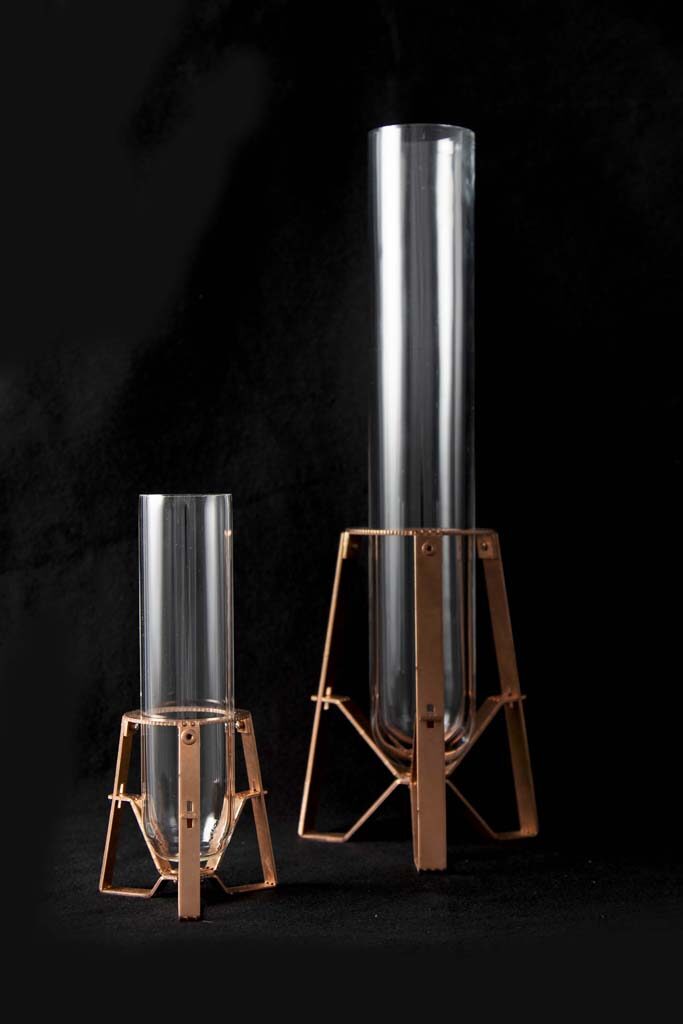05-04-2019
The presentation at the Salone del Mobile in Milan is always special because you only actually think about what you’re doing when you’re on your way there; everything comes together in the preceding weeks. This is perhaps the case more than ever this year. You could say we’re making a ‘nod to the conceptual’. Not to the right, but more to the essence of what we made before.
New but logical
And we even have a theme: almost everything we are presenting is square. But what it’s really about is that the designs are based on acting consequently and the consequence of an action. For instance, we saw a beam repeatedly across the thickest part into exact squares so that we are left with nothing but cubes. Or a step further: we use a beam to saw a box and make a block box using nothing but cubes in the same way from the core wood. In other words, the maximum number of largest possible cubes you can get out of one beam. Is it all worth it? I don’t know. If nothing else, it says something about how I think and work, and you must first have worked like this in order to say that. I couldn’t have made this at the beginning of my career.
The beams are sawn on the band saw we purchased recently. It was this machine that prompted us to take sawing as the starting point and to push to the limits of what is possible. If we remove a few parts from the saw, we can fit and saw some pretty large beams on it and so, as a continuation of the inside-out cubes and benches (that are actually sawn especially for us in a sawmill), I devised a tree-trunk-telescope-object. Perhaps the most useful thing about it is that you can sit on it, but what’s better is that when it is pulled out, the wood and nature become visible and tangible.
Paintings
Also very attractive, and probably completely unsaleable, are the 40×40 3D paintings we have made. We had already previously made test paintings; I quite wrongly call all my works that are made to hang on the wall ‘paintings’ because you can hang them on the wall like a painting. The paintings are made from coloured 40×40 mm planks of scrap wood that are three-dimensionally and rhythmically joined together. Due to their three-dimensional character, the pieces change colour when you walk past them or move them. The pieces of wood are all glued corner to corner.
Corner to corner
Corner to corner is also precisely what I used as the starting point for a very useful cabinet construction system. The cabinet will stand central in the space on the first floor by Rossana Orlandi, where we have presented our work for years, and is constructed from identical sheets with a hole in each corner. They are assembled using lasered components and screws and bolts. Instead of the aluminium sheets we have used to make this cabinet, you could use any material at all, as long as the sheet is straight, as we have discovered. As the sheets are joined together corner to corner, their thickness doesn’t really matter. The system is equally as conceptual as the other objects we are presenting, but it is also practical. They are packaged per four or six units in a box and you assemble them yourself. Yet another product that you have to put together yourself, even though they have never been successful for us. The four units can also be assembled horizontally to create a coffee table.
Strijp-T vases
As well as all the square stuff, we have also been able to acquire some thick-walled, round, glass test tubes from the old Philips glass laboratory in the neighbouring industrial area Strijp-T. It is a series of vases that is limited by the number of test tubes we were able to find: 52 small tubes, 160 middle-sized and four large ones.
Sofa for SCP
A while ago I also designed a sofa and a daybed for SCP. They make traditionally manufactured and upholstered furniture and I devised a modern-classic piece of furniture. Funnily enough, Brexit or not, after a lot of searching we very traditionally ended up in Eastern Europe for the bodies (the woodwork). Luckily for us, they still have a real furniture industry, actually with very modern machines.
Books
And finally, I almost forgot to mention our most important achievement to be included in the presentation. Last year we published BOOK 2 and BOOK 3 in one go. The period from 2006 to 2017 produced so much work that, despite strict selection, we needed two thick books to record everything that had happened and that had been devised and made. The books are a kind of visual diary of a creative enterprise; like autobiographical coffee table books.
For HR imagery, please contact Pim Hoff (pim@pietheineek.nl).
We exhibit during the Salone at:
GALLERIA ROSSANA ORLANDI
Via Matteo Bandello 14/16
20123 Milano
This post is also available in: NL
« Back to blog






















